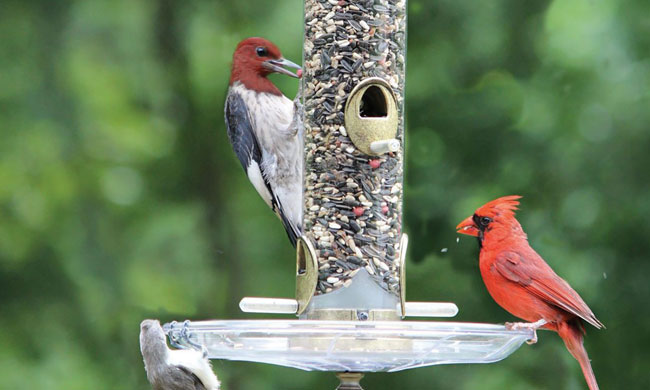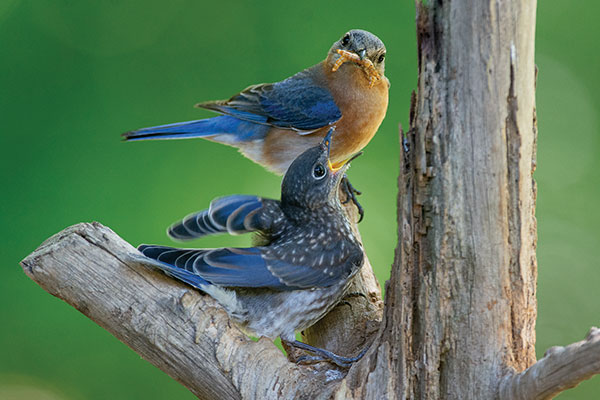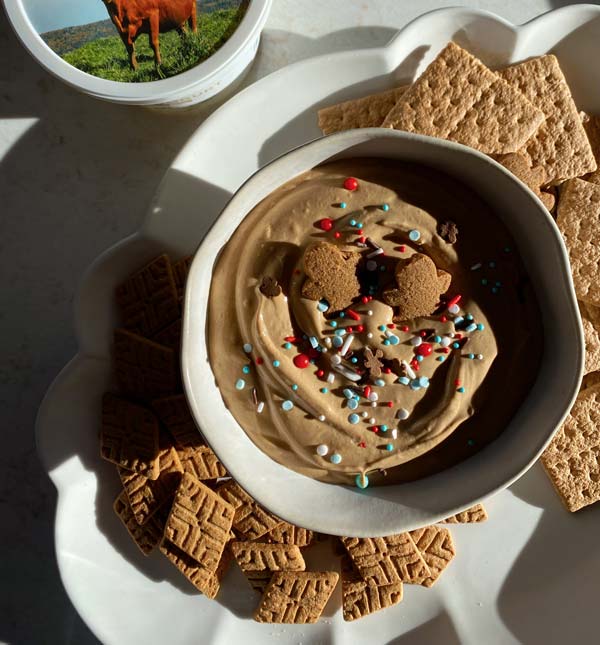Lifestyle
Why Wild Bird Lovers Should Choose Top-of-the-Crop Natural Feed: If you can’t read it, don’t feed it
A growing number of Americans are choosing natural foods for their pets; nearly one-third say they prefer natural products, according to PetFoodIndustry.com.
Last Updated on August 20, 2024 by Daily News Staff
(Joan Casanova) Have you ever wondered what’s in your favorite packaged foods, grabbed a box from your pantry, read the ingredients and realized you still didn’t know what you’re eating? The ingredients in some processed foods can read like a chemist’s shopping list. Now imagine if backyard birds could read. What would they say about the ingredients in the food you feed them?
A growing number of Americans are choosing natural foods for their pets; nearly one-third say they prefer natural products, according to PetFoodIndustry.com. People who feed wild birds also want to know they’re feeding the most natural and nutritious options. It’s hard to be confident when reading the mystifying ingredient list on feed bags makes you feel like a bird brain.
With an abundance of options, ranging from commercial bird feeds to small-batch varieties, understanding the differences can help bird lovers make informed choices to meet wild birds’ nutritional needs while considering factors like sustainability and quality.
The wild bird experts at Cole’s Wild Bird Products, Co. offer these tips to ensure you’re feeding your feathered friends a healthy, natural diet.
 While commercial bird feeds aim to provide basic nutrition for birds, the quality and nutritional content can vary. Some mixes contain a high proportion of less desirable seeds and fillers, offering limited nutritional value.
While commercial bird feeds aim to provide basic nutrition for birds, the quality and nutritional content can vary. Some mixes contain a high proportion of less desirable seeds and fillers, offering limited nutritional value.
Small batch bird feeds prioritize nutritional content, using premium ingredients rich in essential nutrients, fats and proteins. This can provide birds with a more balanced diet, promoting overall health and vitality.
Avoid commercial bird feeds that are full of cheap fillers, such as red milo, millet, cracked corn, oats and wheat. Fillers lack nutritional value and birds will kick them right out of the feeder.
Instead, select small batch, natural feed comprised of top-of-the-crop seeds which contain no chemicals or mineral oil like Cole’s and bypass seed coated with them. Some commercial bird feeds are coated with mineral oil and mixed with crushed rock to add “vitamins.” Current regulations allow manufacturers to list nutritional components of mineral oil (iron, zinc) and crushed rock (vitamin A, calcium carbonate) separately, which can make the ingredients look more impressive. Mineral oil makes birdseed shiny and helps hide dirt and dust, and crushed rock adds weight to the product.
Take note of ingredients you can’t read; often it’s an indication the ingredient is synthetic or lab engineered. Ingredients like menadione sodium bisulfite complex and thiamine mononitrate aren’t found in natural foods; they’re man-made versions of vitamins. The rule of thumb for buying all-natural is “If you can’t read it, don’t feed it.”
Focus on serving feed with an ingredient list you can read and understand. For instance, Cole’s Sunflower Meats contains nothing but shelled sunflower seeds and White Millet contains 100% white millet. Super simple, right?
Study birds visiting your feeders and research feed they prefer or buy feed from a reputable company that’s done that work for you. For example, Cole’s offers select natural seed choices developed and based on research about what birds actually eat. Feed is specifically formulated to attract certain species of birds as well as the largest number of birds. No cheap filler seeds are used and seed is cleaned to ensure quality – no sticks and dirt. When you know and serve what backyard birds prefer, they’ll keep coming back for more.
Supplement seed with natural foods you have at home. For example, woodpeckers love raw peanuts, mockingbirds love fruit and chickadees savor suet. Soak raisins and currants in water overnight then serve or purchase blends with a dried fruit and nut mixture, like Nutberry suet. To attract orioles, skewer halved oranges on a spike near feeders.
Buy feed from companies specializing in wild bird food. Some offer bird feed as a side product of pet products or grass seed producers. Conversely, Cole’s exclusively produces and sells products for feeding backyard birds. Seeds are packaged like human food in “Harvest Fresh Lock” packaging so seeds don’t lose nutritional content or dry out and spoil.
To learn more about all-natural feed options with ingredients even birds could understand, visit coleswildbird.com.
Photos courtesy of Cole’s Wild Bird Products
SOURCE:
Cole’s Wild Bird Seed
Our Lifestyle section on STM Daily News is a hub of inspiration and practical information, offering a range of articles that touch on various aspects of daily life. From tips on family finances to guides for maintaining health and wellness, we strive to empower our readers with knowledge and resources to enhance their lifestyles. Whether you’re seeking outdoor activity ideas, fashion trends, or travel recommendations, our lifestyle section has got you covered. Visit us today at https://stmdailynews.com/category/lifestyle/ and embark on a journey of discovery and self-improvement.
Discover more from Daily News
Subscribe to get the latest posts sent to your email.
Family
5 Tips to Pull Off Holiday Hosting
With stay-at-home holidays a thing of the past for many families, they’re now busy preparing for full-blown celebrations. The return of traditional festivities brings seemingly never-ending to-do lists and pressure to be the perfect host.
Last Updated on December 17, 2025 by Daily News Staff
(Family Features) With stay-at-home holidays a thing of the past for many families, they’re now busy preparing for full-blown celebrations. The return of traditional festivities brings seemingly never-ending to-do lists and pressure to be the perfect host.
From mastering a mouthwatering menu and donning your home with decadent decor to ensuring guests enjoy the evening to the fullest, hosting duties bring plenty of responsibilities. This year, though, you can avoid those anxious feelings with some preparation ahead of the big day.
To help pull off a sensational seasonal soiree, consider these tips from the entertaining experts at Sun-Maid to make the holidays brighter and more manageable so you can navigate the stresses of hosting.
Invite Others to Share Favorite Traditions
Especially with stay-at-home holidays in recent years, some friends and family members may have developed their own special traditions from new recipes and foods to seasonal games and activities. Inviting your guests to bring or share something that represents their favorite part of the holidays can help everyone feel welcome.
Take Time for Yourself
Remember to make time for yourself so you can enjoy the fruits of your labor right alongside guests. The busyness of this time of year can add stress but reflecting on the true meaning of the season and reveling in your favorite parts of the holidays can help you avoid feeling overwhelmed.
Add New Ingredients to Your Menu
While pairing this year’s turkey or ham with the classics provides comfort and calls to mind holiday memories of the past, cooking with new ingredients and adding fresh recipes to the menu can put a fun spin on the season and maybe even create your own traditions to carry forward.
For example, baking with an option like Sun-Maid Raisins provides a whole fruit option with zero grams of added sugars per 1/4-cup serving. They’re an easy, better-for-you substitution to reduce overall sugar intake without compromising flavor or texture when compared with dried cranberries, which contain 27 grams of added sugars per 1/4-cup serving. The natural sugars of raisins make them a versatile, useful addition to a wide variety of holiday-worthy dishes.
Hop On Hot Food Trends
One of this year’s most popular trends in the kitchen is food boards, a fun and easy way to elevate flavor while incorporating favorites like cured meats, cold cuts, cheese slices and cubes, dips, nuts and more. Plus, you can keep your board balanced with nutritious items like vegetables and fruit, such as raisins, which provide sweet flavor without the added sugars.
A Time for Truce
Gathering for the holidays is about coming together with loved ones, family, friends and neighbors – and pulling it off means catering to everyone’s needs and wants. It’s a time for compromises and truces. To help add a little extra spark this year, try incorporating a theme to the party or coordinate fun activities and games that can be enjoyed by all. For example, holiday-themed charades, a seasonal “name that tune” game and gift exchanges all give guests ways to get in on the excitement.
To find more holiday entertaining inspiration and recipe ideas, visit SunMaid.com/PullOffTheHolidays .
Photos courtesy of Getty Images
SOURCE:
Sun-Maid Raisins
Discover more from Daily News
Subscribe to get the latest posts sent to your email.
Food and Beverage
Unwrap the Holidays: Whataburger Launches 12 Days of Whatacheer With Daily App Deals
Celebrate the holidays with Whataburger’s 12 Days of Whatacheer! Discover daily in-app deals, exclusive to Rewards members, from December 12–23. Unwrap new menu favorites, BOGO offers, and festive savings—only on the Whataburger App.
12 Days of Whatacheer: Festive Deals for Rewards Members
How It Works
- Who: Whataburger Rewards members (sign up in the app if you’re not already!)
- When: December 12–23, with a new offer every day
- How: Open the Whataburger App, claim the day’s deal, and enjoy with your next order
Holiday-themed graphic reading ‘12 Days of WhataCheer’ on a red background with white dots. Below the text are images of Whataburger menu items: a Cinnamon Roll, Onion Rings, a Whataburger, a Whatafresher, a Honey Butter Chicken Biscuit, and a Strawberry Shake.
Why Join the Whataburger Rewards Fun?
Get Started
Discover more from Daily News
Subscribe to get the latest posts sent to your email.
Recipe of the Week
Holiday Desserts Just Got a Dairy-Forward Upgrade
Holiday Desserts: From festive cookies to indulgent dips, these delicious desserts bring people together to create memories that will last a lifetime. If you’re looking to impress guests, Santa Cookies are the ultimate treat. For a unique twist, try Gingerbread Dip, featuring vanilla Greek yogurt made with 100% grass-fed organic milk.
Last Updated on December 17, 2025 by Rod Washington

Holiday Desserts Just Got a Dairy-Forward Upgrade
(Family Features) Holiday desserts set the stage for seasonal delight and add a touch of joy to gatherings. From festive cookies to indulgent dips, these delicious desserts bring people together to create memories that will last a lifetime. If you’re looking to impress guests, Santa Cookies are the ultimate treat. Made with Maple Hill Salted Butter, they’re rich, soft and full of festive spirit. For a unique twist, try Gingerbread Dip, featuring vanilla Greek yogurt made with 100% grass-fed organic milk. Whether you’re hosting or deciding what to bring to the potluck, Maple Hill’s 100% grass-fed organic dairy makes it easy to whip up desserts that are as wholesome as they are delicious. Rich in nutrients and free from GMOs, hormones and antibiotics, each product comes from farms that prioritize regenerative practices as nature intended. With a 40% healthier ratio of omega 3:6 and 40% higher levels of CLA fatty acids compared to traditional organic dairy, you can feel good about sweet treats at the holiday table. To find more recipes, visit MapleHill.com.
Santa Cookies
Yield: 14 cookies- 1 cup (2 sticks) Maple Hill Salted Butter, at room temperature
- 1/2 cup brown sugar
- 1 tablespoon vanilla extract
- 1 large egg, at room temperature
- 2 1/4 cups all-purpose flour
- 1/4 teaspoon salt
- 1 teaspoon red food coloring
- mini chocolate chips
- mini red chocolate-coated candies
- 1/2 cup (1 stick) Maple Hill Salted Butter, at room temperature
- 4 ounces cream cheese, at room temperature
- 1 teaspoon vanilla extract
- 2 1/2 cups powdered sugar
- Preheat oven to 350 F and line two baking sheets with parchment paper.
- In large mixing bowl, beat butter, sugar and vanilla until light and fluffy. Add egg and beat until combined. Add flour and salt; mix until dough begins to form ball.
- Remove 1 cup dough and set aside. Add red food coloring to remaining dough.
- From red cookie dough, make one 1-inch ball and five 1/2-inch balls. From plain cookie dough, make one 3/4-inch ball and five 1/4-inch balls.
- On prepared baking sheet, place red 1-inch ball and gently flatten until 1/2-inch thick. Attach four red 1/2-inch balls for arms and legs. Attach plain 3/4-inch ball for head and gently flatten until 1/2-inch thick. Attach plain 1/4-inch balls for hands and feet. Shape remaining red 1/2-inch ball into triangle for hat and attach. Repeat with remaining dough, arranging cookies 2 inches apart on baking sheet. Add chocolate candies for eyes and buttons.
- Bake 12-15 minutes, or until lightly golden.
- To make frosting: In medium bowl, beat butter and cream cheese until light and fluffy, about 3 minutes. Add vanilla and powdered sugar; mix until combined.
- To decorate: Place half of frosting in piping bag with small tip to line Santa’s arms and legs. Place other half in second piping bag with small star tip to add Santa’s beard, hat and hands. Put small dot of icing between eyes and beard and place red mini chocolate-coated candy on face for nose.

Gingerbread Dip
Servings: 8-12- 4 ounces cream cheese, at room temperature
- 1/4 cup brown sugar
- 1/4 cup powdered sugar
- 3 tablespoons molasses
- 1 container (16 ounces) Maple Hill Vanilla Greek Yogurt
- 1 teaspoon ground ginger
- 1 teaspoon ground cinnamon
- 1 teaspoon ground nutmeg
- 2 cups whipped cream
- graham crackers
- fruit
- In medium bowl using electric mixer on medium speed, beat cream cheese and sugars about 1 minute. Add molasses and mix until combined.
- Add Greek yogurt, ginger, cinnamon and nutmeg; beat until combined. Fold in whipped cream and mix until fully incorporated. Refrigerate 1 hour before serving or overnight.
- Serve with graham crackers and fruit.
At our core, we at STM Daily News, strive to keep you informed and inspired with the freshest content on all things food and beverage. From mouthwatering recipes to intriguing articles, we’re here to satisfy your appetite for culinary knowledge.
Visit our Food & Drink section to get the latest on Foodie News and recipes, offering a delightful blend of culinary inspiration and gastronomic trends to elevate your dining experience. https://stmdailynews.com/food-and-drink/
Discover more from Daily News
Subscribe to get the latest posts sent to your email.

